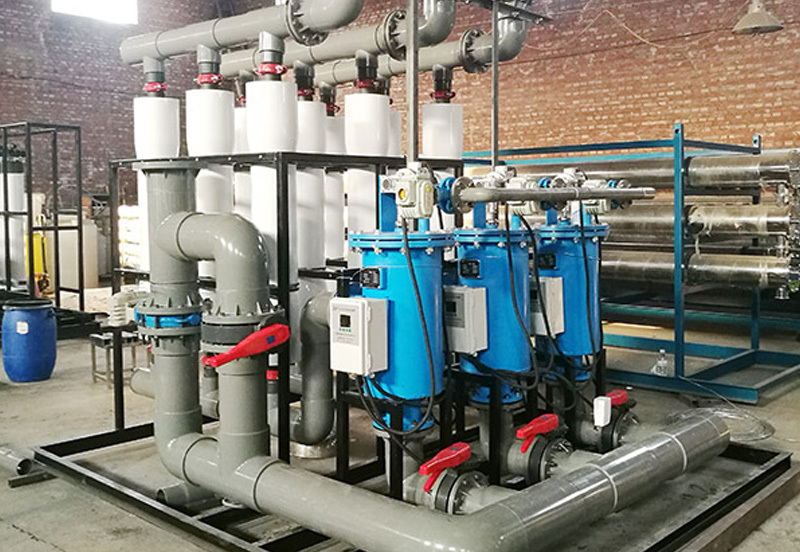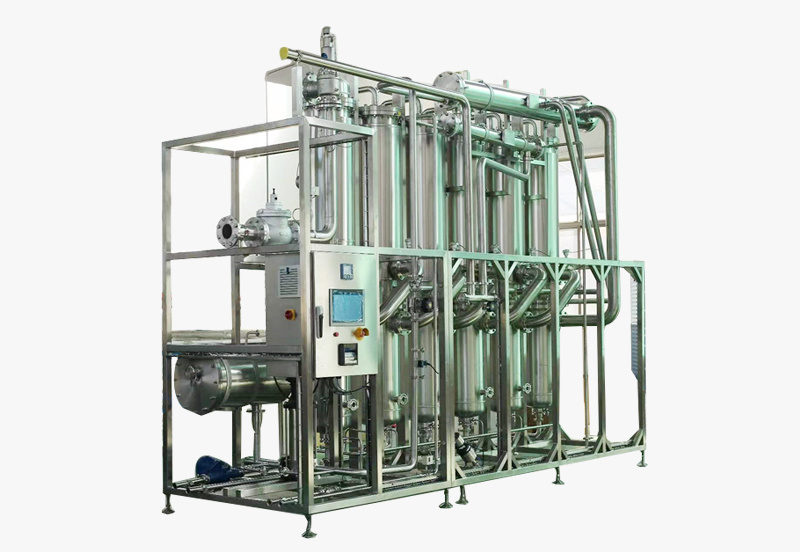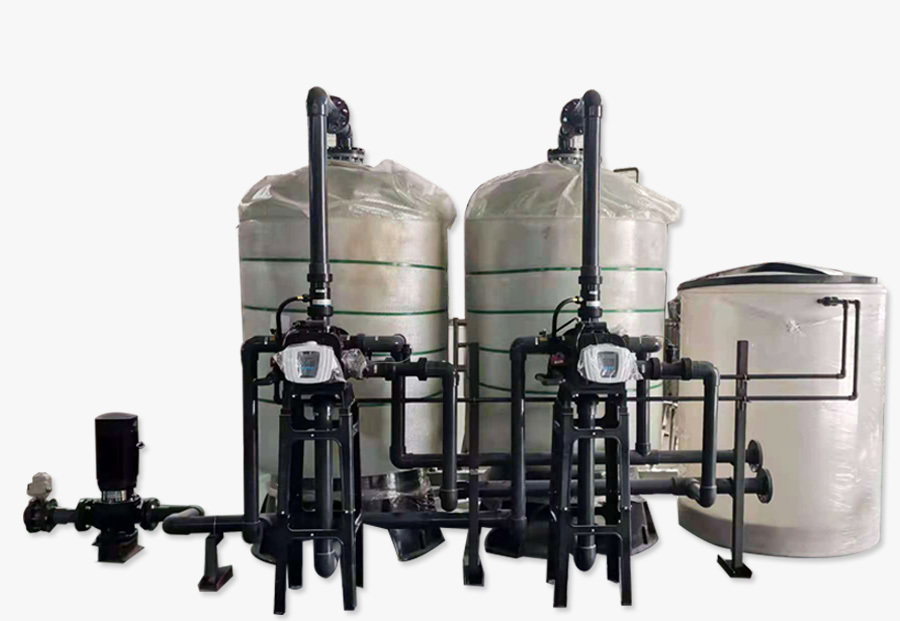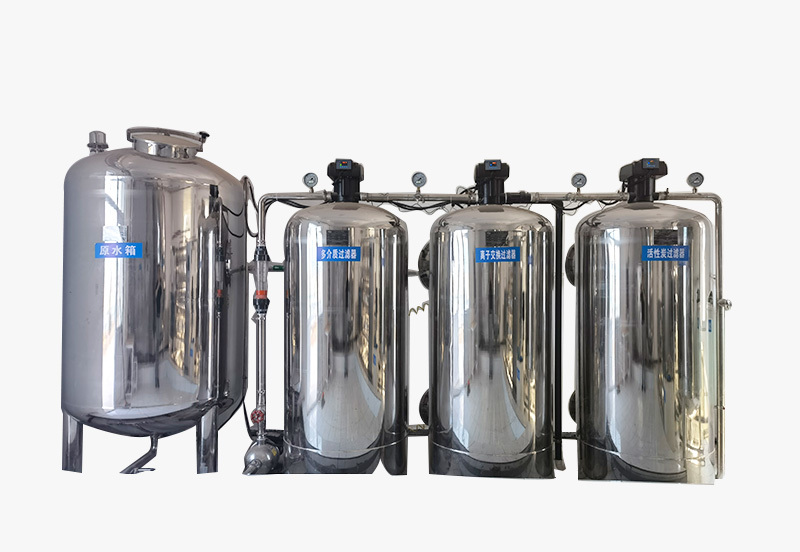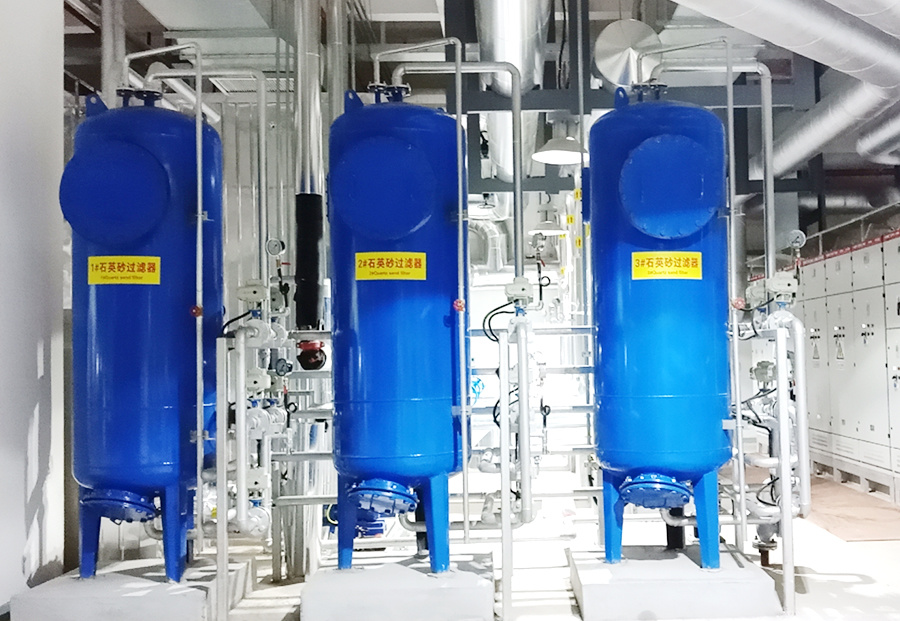High-throughput filter system
Tags:
Belongs to Category:
High-throughput filter system
Product Description
Overview
Natural water contains various impurities. These can be broadly classified into three categories: suspended matter, colloidal matter, and dissolved matter. With the gradual improvement of people's living standards, various industries have increasingly stringent requirements for water quality. Therefore, pre-treatment of water is essential. Practice has proven that the quality of water pre-treatment has a significant impact on the long-term stable operation of subsequent water treatment equipment.
Mechanical filters are mainly used for turbidity removal in water supply and drainage treatment, pre-treatment of softened water and pure water, and removal of suspended solids, mechanical impurities, and some colloidal substances from raw water. The influent turbidity should be less than 20 degrees, and the effluent turbidity can reach below 3 degrees. Our factory produces mechanical filters in various materials, including stainless steel and epoxy-lined steel. When stainless steel is used, it can be used for the treatment of food and pharmaceutical water.
Structural Form
The mechanical filter consists of a shell, end caps, upper and lower water distribution devices, sealing rings, operating valves, pressure gauges, etc. According to different water quality requirements, single-layer, double-layer, or multi-layer filter media can be used to meet water requirements.
Uses
Mechanical filters are widely used in the pretreatment of industrial and domestic water, as well as in water supply and drainage treatment in chemical, dyeing, pesticide, coking, fertilizer, pharmaceutical, solvent, electroplating, environmental protection, and other industrial sectors, and in the deep purification treatment of industrial wastewater.
Classification of Mechanical Filters
Mechanical filters are usually divided into gravity type and pressure type according to their pressure, with the pressure type being more commonly used. According to their specifications, they are further divided into small and large types.
(1) Small mechanical filters are generally made of two materials: one is a high-quality carbon steel container with a working pressure ≤0.6Mpa; the other is stainless steel with a working pressure ≤0.4Mpa. Backwashing only uses pressure water, generally without air scrubbing, and the filter media can be single-layer, double-layer, or multi-layer according to the raw water quality.
(2) Large mechanical filters: There are two types: single-flow and double-flow, with a series ranging from 750 to 3000. The water treatment capacity ranges from 4m³/h to 100m³/h, and the filter layer can be single-layer or double-layer.
Performance of Quartz Sand Filter Media
Quartz sand has a density of (2.5-2.7), which is greater than that of anthracite. It is used in combination with anthracite in the second layer of double-layer or multi-layer filter media devices and is currently a widely used ideal filter media in water treatment. Quartz sand filter media is made by crushing, screening, and purifying refined quartz stones, resulting in pure white, glossy crystals. It has high mechanical strength, good chemical stability, and a long service life, which are characteristics of filter media.
(1) Physical and Chemical Properties of Quartz Sand
Physical and Chemical Properties Table of Quartz Sand
|
Item |
Index |
Item |
Index |
|
Mohs Hardness |
7.5 degrees |
Abrasion Rate |
0.003% |
|
Melting Point |
1480℃ |
Crushing Rate |
0.035% |
|
Density |
2.66g/cm³ |
Hydrochloric Acid Soluble Rate |
0.2% |
|
Bulk Density |
1.75g/cm³ |
SiO2 |
99.8% |
|
Porosity |
43% |
|
|
Note: The appearance is white glossy crystals, the particles are hard and uniform, and contain no other impurities.
(2) General Specifications of Quartz Sand Filter Media
General Specifications Table of Quartz Sand Filter Media
|
Particle Size Range (mm) |
Particle Size Range (mm) |
|
0.5~1.2 |
1.0~1.8 |
|
0.5~1.5 |
1.0~2.5 |
|
0.6~0.9 |
2.0~4.0 |
|
0.8~1.2 |
4.0~8.0 |
|
0.8~2.0 |
8.0~15.0 |
|
1.0~1.5 |
15~25 |
Note: 1. An error of ±0.2mm is allowed for individual particle sizes;
2. The weight of particles smaller than the lower limit is ≤3%;
3. The weight of particles larger than the upper limit is ≤2%;
4. The uniformity coefficient K80 ≤ 2.0.
Filter Media Grading
1. Single-layer filter media and support layer
Quartz sand with a particle size of 0.8-2.0 mm, 700 mm, support layer see the table below (the support layer can use 2-25 mm sand and gravel, layered from fine to coarse according to the actual situation).
Filter Media Support Layer Composition
|
Layer (from top to bottom) |
Particle Size (mm) |
Thickness (mm) |
|
1 |
2-4 |
100 |
|
2 |
4-6 |
100 |
|
3 |
6-15 |
100 |
|
4 |
15-25 |
100 |
Normal filtration rate for the above filter media is 10-17 m/h. Backwashing water temperature is 10℃, backwashing intensity is 8-10 L/m²•s, and backwashing duration is 10-15 minutes.
2. Double-layer filter media
The upper layer is 2-3mm smokeless coal, and the lower layer is 1.0-2.5mm diameter quartz sand. The thickness depends on water pressure, water output, and water quality. The support layer is the same as the table above.
3. Multi-layer filter media
Multi-layer filter media has a larger interception capacity and adaptability than general single and double-layer filter media. The filter contains five layers, from top to bottom:
Smokeless coal d=2-3mm
Quartz sand d=1.0-2.5mm
Garnet d=0.3-0.5mm
Gravel d=10mm
4. Height and particle size depend on water pressure, water output, and water quality.
The bottom layer uses pebbles as a support layer. The filter media has good grading and specific gravity difference, achieving optimal filtration effect. Normal filtration rate is 15m/h. Backwashing is performed when the head loss of water passing through the filter layer reaches 0.05-0.1MPa.
► Specifications, models, and technical parameters of mechanical filters
Specifications and performance of steel mechanical filters
|
Model |
Specifications (mm) |
Maximum water output (T/h) |
Operating temperature (℃) |
Filtration area (m²) |
Filtration rate (m/h) |
Filter media layer height (mm) |
Maximum outer dimensions ø |
Net weight (kg) |
|
CJQ-30 |
ø300 |
1.05 |
4-50 |
0.07 |
8-15 |
700 |
ø400x 1652 |
189 |
|
CJQ-40 |
ø400 |
1.89 |
4-50 |
0.126 |
8-l5 |
700 |
ø550×1770 |
242 |
|
CJQ-50 |
ø500 |
2.94 |
4-50 |
0.196 |
8-15 |
1000 |
ø644×2210 |
383 |
|
CJQ-75 |
ø750 |
6.6 |
4-50 |
0.44 |
8-15 |
1000 |
ø884×2385 |
638 |
|
CJQ-100 |
ø1000 |
11.8 |
4-50 |
0.78 |
8-15 |
1200 |
ø1012×2297 |
880 |
|
CJQ-150 |
ø1500 |
26.5 |
4-50 |
1.76 |
8-15 |
1200 |
ø1516×3469 |
1506 |
|
CJQ-200 |
ø2000 |
47.1 |
4-50 |
3.14 |
8-l5 |
1200 |
ø2020×3610 |
2455 |
|
CJQ-250 |
ø2500 |
73.6 |
4-50 |
4.90 |
8-l5 |
1200 |
ø2524×4020 |
4179 |
|
CJQ-300 |
ø3000 |
105.9 |
4-50 |
7.06 |
8-15 |
1200 |
ø3028x 4480 |
6355 |
Note: 1. Maximum operating pressure is 0.6MPa, test pressure is 0.9MPa.
2. Internal pebble cushion layer and filter media layer (quartz sand) are provided by the user.

External dimensions (mm) of GJQ-30 to GJQ-75 steel mechanical filters are shown in Figure 1.
|
Specifications |
H |
H1 |
H2 |
H3 |
ø1 |
ø2 |
Mn |
Dgl |
Dg2 |
Dg3 |
|
ø300 |
1652 |
1502 |
1100 |
700 |
400 |
368 |
ø12×12 |
25 |
15 |
40 |
|
ø400 |
1770 |
1620 |
1100 |
700 |
550 |
490 |
ø14×16 |
32 |
25 |
40 |
|
ø500 |
2210 |
2060 |
1500 |
1000 |
644 |
590 |
ø16×18 |
40 |
25 |
50 |
|
ø750 |
2385 |
2235 |
1500 |
1000 |
864 |
824 |
ø18×20 |
65 |
32 |
50 |
External dimensions (mm) of GJQ-100 to GJQ-300 steel mechanical filters are shown in Figure 2.
|
Specifications |
H |
H1 |
H3 |
H4 |
Ha |
L1 |
L2 |
L3 |
L4 |
Dgl |
Dg2 |
Dg3 |
Dg4 |
Dg5 |
Dg6 |
a |
b |
ø |
|
ø1000 |
2897 |
905 |
905 |
165 |
126l |
629 |
629 |
750 |
470 |
65 |
65 |
80 |
65 |
80 |
40 |
160 |
125 |
990 |
|
ø1500 |
3465 |
1025 |
1025 |
185 |
1426 |
870 |
870 |
1000 |
614 |
80 |
80 |
100 |
80 |
100 |
50 |
180 |
140 |
1450 |
|
ø2000 |
3610 |
1100 |
1100 |
195 |
1481 |
882 |
882 |
1255 |
799 |
100 |
100 |
150 |
100 |
150 |
80 |
250 |
200 |
1800 |
|
ø2500 |
4020 |
1150 |
1150 |
205 |
1661 |
1032 |
1032 |
1500 |
941 |
125 |
125 |
150 |
125 |
150 |
100 |
350 |
300 |
2000 |
|
ø3000 |
4480 |
1200 |
1200 |
220 |
1811 |
1178 |
1178 |
1750 |
1005 |
150 |
150 |
200 |
150 |
200 |
100 |
400 |
300 |
2400 |
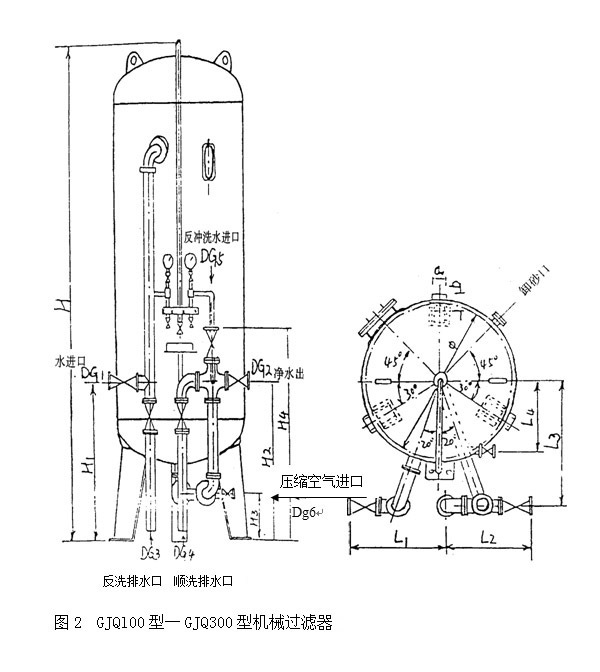
Leave a Message
Fill in your phone number and E-mail information, and we will contact you within one working day to solve your problems as soon as possible.
-- Recommended --
Shijiazhuang Tianwang Environmental Protection Technology Co., Ltd.
Shijiazhuang Tianwang Environmental Protection Technology Co., Ltd. is a high-tech enterprise specializing in the research and development, manufacturing and sales of water treatment equipment.
Contact Information
Production address: No. 9, Fengchan Road, Economic and Technological Development Zone, Shijiazhuang City
Office Address: 25th Floor, Block C, No. 310 Changjiang Avenue, Shijiazhuang High-tech Development Zone
Contact Number:
0311-89272359 0311-68039237
Enterprise Email:
twhbkj@163.com
Website: en.sjztwhb.com


